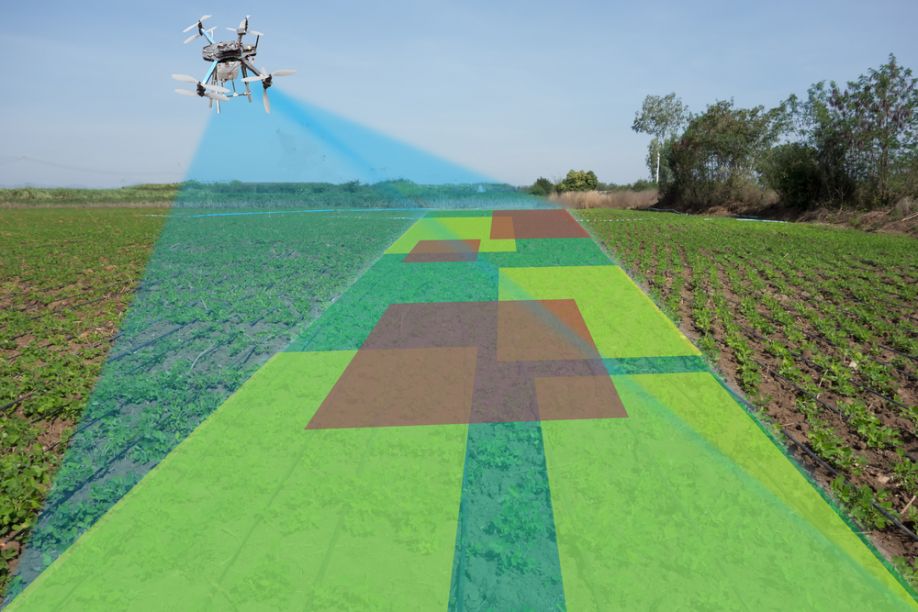Agri-Analytics and Food Security: Navigating Challenges in a Growing World

India stands as a prominent player in the agriculture sector globally. It is a major source of livelihood for a significant part of its population and also a huge contributor to the world's agricultural landscape. Boasting expansive wheat, rice, and cotton plantations, the largest cattle herd, and being the leading producer of milk, pulses, and spices, India plays a key role in ensuring food security on a global scale. Employing nearly half of the nation's workforce, the Indian agricultural sector will witness substantial growth, with forecasts indicating that it will be valued at $24 billion by 2025, as per Inc42. However, the journey toward sustainable food production is not without challenges, and a synergy between agriculture and analytics holds the key to overcoming them.
Agriculture Analytics is Helping Bridge the Gap
The combination of agriculture and analytics, commonly referred to as agri-analytics, has evolved as an important solution to the challenges confronting modern agriculture. Today, advancements in technologies such as satellite data, the Internet of Things (IoT), and many analytics tools have found their way into the sector. Moreover, the key driver of growth in the agriculture analytics market is the increasing government initiatives aimed at deploying improved agricultural techniques. The volumes of data generated by the agriculture sector are rising steeply, and the adoption of IoT devices that collect data from connected farm equipment, such as smart tractors and drones, is further adding to the growth momentum of agriculture analytics. This, in turn, leads to noteworthy progress in plant genomics, soil health, livestock management, and the instant development of new technologies using satellite data and analytics.
Agri-Analytics for a Sustainable Future
Being the foundational pillar of economies worldwide, agriculture plays an essential role in meeting the demands of a fast-growing global population. The world's population will witness a 33% increase by 2025; that is, it will touch 9.7 billion, approximately, as per the United Nations. This brings to the fore the demanding issue of food security, which is dependent on the ability of agriculture to adapt to the changing world. In addition, the sector must also deal with the challenges put forth by climate change, which is likely to have a substantial impact on agricultural production.
Climate Change and Agriculture
Climate change is a significant challenge that threatens the very foundation of agriculture. The erratic weather patterns, extreme temperatures, and changing precipitation levels associated with climate change pose a considerable challenge to crop production. The unpredictability of weather events can result in crop losses, putting food security at risk. Thus, the sector urgently needs to adjust to these changing conditions and reduce their impact. This is where agri-analytics enters the scene as a powerful tool for both understanding and addressing the challenges posed by climate change.
Data-driven insights can help farmers make informed decisions with respect to crop varieties, ideal planting duration, and irrigation schedules, which in turn can impact crop yields. Analytics tools can help detect early signs of stress in crops, enabling farmers to take proactive measures to mitigate potential damage. By integrating previous climate data and real-time weather information, farmers can plan their operations more competently, lowering the risks linked to extreme weather events.
The Role of Satellite Data in Agriculture
The use of satellite data in agriculture is witnessing an unprecedented increase, and it is set to revolutionize the sector. Through advanced analytics, farmers can use data to gain actionable knowledge about their operations. These understandings entail a wide range of factors, from soil health and pest management to crop quality and yield predictions.
With the advent of predictive analytics, farmers can take a proactive approach to addressing challenges. Subscription-based services offer real-time alerts about crop conditions, enabling farmers to make timely interventions. This level of control over the farming process empowers farmers to optimize their daily tasks, ultimately leading to improved crop yields and resource efficiency.
Challenges in Implementing Farm Analytics
While the potential benefits of farm analytics are apparent, there are challenges to overcome. The integration of artificial intelligence (AI) and other emerging technologies needs high initial investments. Moreover, competent farming tools and awareness among farmers are necessary to make the most of these technologies.
The Future of Agri-Analytics
Agri-analytics is set to transform the agricultural landscape in the coming years. It promises to not only enhance productivity but also ensure the sustainability of farming practices. By providing farmers with data-driven insights, it allows them to make informed decisions, adjust to changing conditions, and optimize their operations.
Collaboration between the agricultural sector and technology companies, both established and startups, is key to realizing the full potential of agri-analytics. Through partnerships and investments, the industry can develop solutions that are both accessible and affordable for farmers of all scales.
The Bottomline
Agriculture analytics has become an indispensable instrument in dealing with the challenges of food security, climate change, and a growing global population. The fusion of agriculture and analytics empowers farmers with the actionable insights and tools needed to overcome the uncertainties of a changing climate and increasing demand for food. The right investments and partnerships can help agri-analytics revolutionize the agriculture sector. This will facilitate a sustainable and secure food supply for the future.
Comments (0)
This post does not have any comments. Be the first to leave a comment below.
Featured Product

